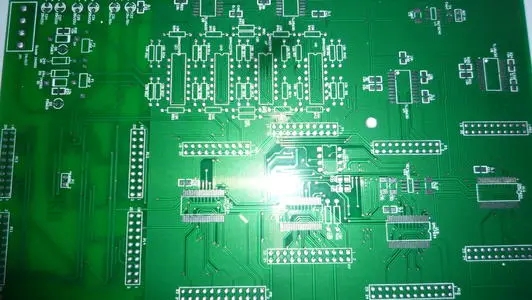1. System requirements:
VOUT=5.0V; VIN(MAX)=9.0V; VIN(MIN)=5.6V; IOUT=700mA; operating cycle=100%; TA=50 degree Celsius
Select the 750mA MIC2937A-5.0BU voltage stabilizer according to the above system requirements, and its parameters are:
VOUT=5V±2% (worst case when overheating)
TJ MAX=125°C. Using TO-263 package, θJC=3 degree Celsius/W;
θCS≈0 degree Celsius/W (directly soldered on the circuit board).

2. Preliminary calculation:
VOUT(MIN)=5V-5*2%=4.9V
PD=(VIN(MAX)-VOUT(MIN))+IOUT+(VIN(MAX)*I)=[9V-4.9V]*700mA+(9V*15mA)=3W
The maximum temperature rise, ΔT=TJ(MAX)-TA = 125 degree Celsius-50 degree Celsius=75 degree Celsius; thermal resistance θJA (worst case): ΔT/PD=75 degree Celsius/3.0W=25 degree Celsius/W.
The thermal resistance of the heat sink, θSA=θJA-(θJC+θCS); θSA=25-(3+0)=22 degree Celsius/W (maximum).
3. Determine the physical size of the radiator:
Compared with a square, single-sided, horizontal copper foil heat dissipation layer with a solder resist layer and a heat dissipation copper foil covered with black oil paint and a 1.3 m/s air heat dissipation solution, the latter has the best heat dissipation effect. .
Using the solid line solution, a conservative design requires 5,000mm2 of heat-dissipating copper foil, that is, a square of 71mm*71mm (2.8 inches on each side).
4. The heat dissipation requirements for SO-8 and SOT-223 packages:
Calculate the heat dissipation area under the following conditions: VOUT=5.0V; VIN(MAX)=14V; VIN(MIN)=5.6V; IOUT=150mA; duty cycle=100%; TA=50 degree Celsius. Under allowable conditions, circuit board production equipment can more easily handle dual-in-line SO-8 packaged devices. Can SO-8 meet this requirement? Using MIC2951-03BM (SO-8 package), the following parameters can be obtained:
TJ MAX=125 degree Celsius; θJC≈100 degree Celsius/W.
5. Calculate the result of using SOT-223 package:
PD=[14V-4.9V]*150mA+(14V*1.5mA)=1.4W
Rising temperature=125 degree Celsius-50 degree Celsius=75 degree Celsius;
Thermal resistance θJA (worst case):
ΔT/PD=75 degree Celsius/1.4W=54 degree Celsius/W;
θSA=54-15=39°C/W (maximum). According to the above data, the use of 1,400 mm2 heat-dissipating copper foil (square with a side length of 1.5 inches) can meet the design requirements.
6. Calculate the parameters of the SO-8 package:
PD=[14V-5V]*150mA+(14V*8mA)=1.46W;
Increased temperature=125 degree Celsius-50 degree Celsius=75 degree Celsius;
Thermal resistance θJA (worst case):
ΔT/PD=75 degree Celsius/1.46W=51.3 degree Celsius/W;
θSA=51-100=-49 degree Celsius/W (maximum).
Obviously, in the absence of refrigeration, SO-8 cannot meet the design requirements. Consider the MIC5201-5.0BS voltage regulator in the SOT-223 package. This package is smaller than the SO-8, but its three pins have good heat dissipation. Choose MIC5201-3.3BS, and its related parameters are as follows:
TJ MAX=125 degree Celsius
The thermal resistance of SOT-223 θJC=15 degree Celsius/W
θCS=0 degree Celsius/W (directly soldered on the PCB board).
The above is the circuit board design-the heat dissipation design of SMT power devices. Ipcb is also provided to PCB manufacturers and PCB manufacturing technology.